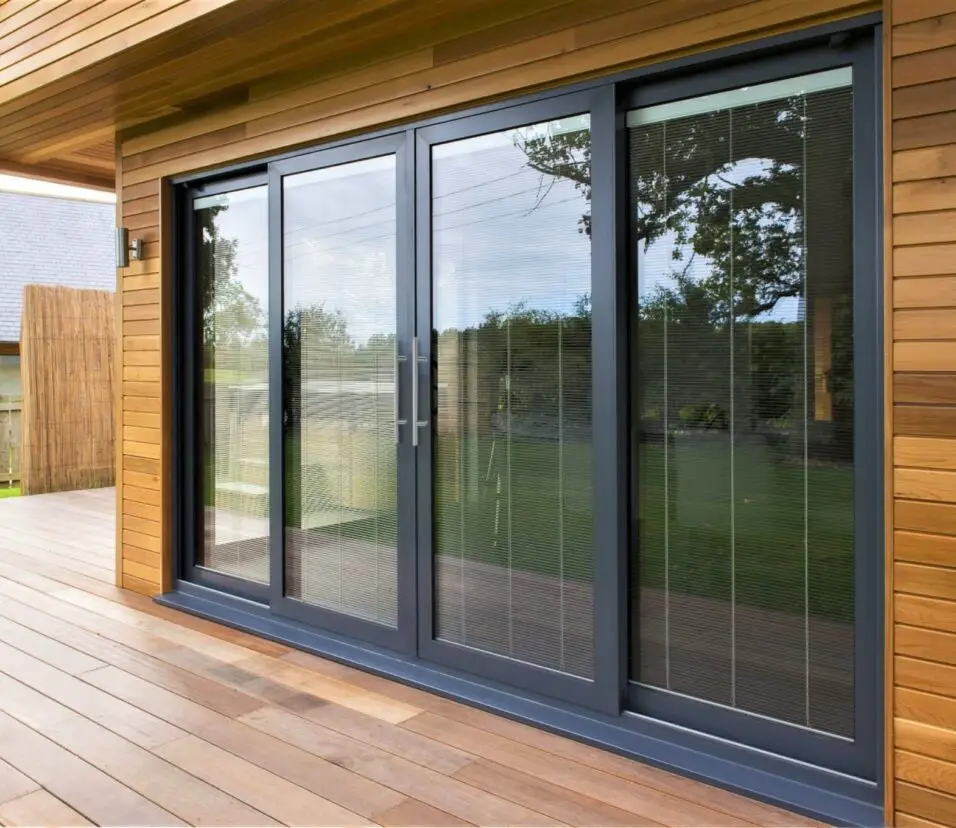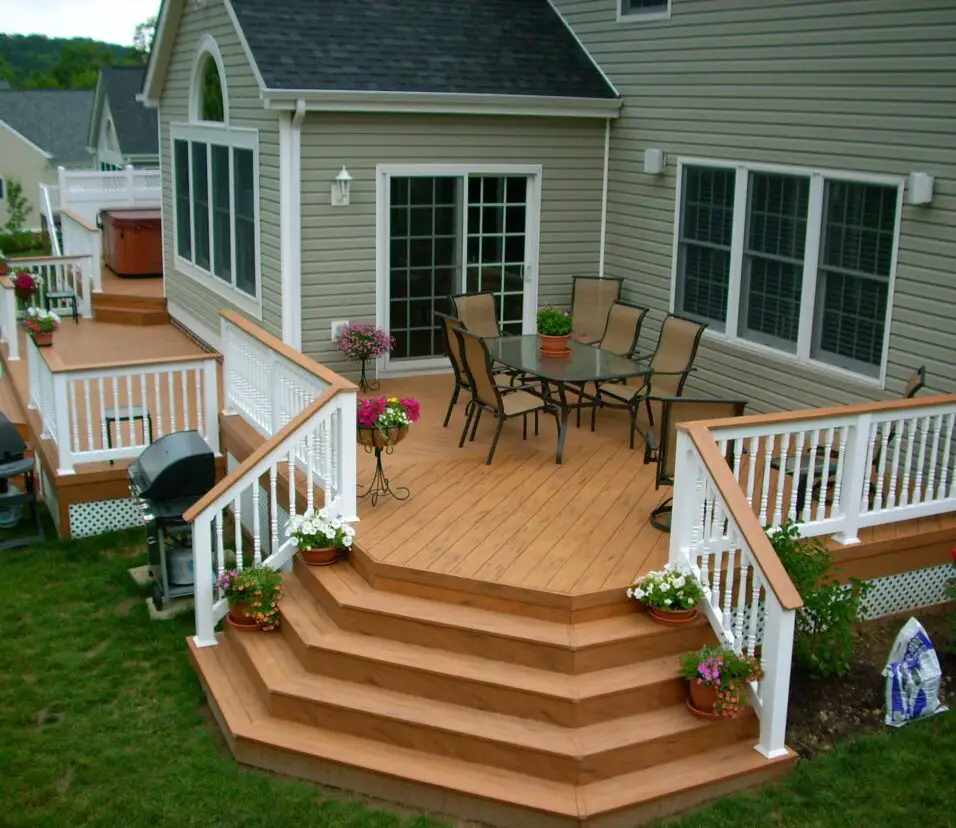How Thick Should A Patio Slab Be
Introduction
How Thick Should A Patio Slab Be: When it comes to building a patio, one of the most important considerations is the thickness of the patio slab. The thickness of the slab will determine its durability, strength, and ability to withstand the elements. It is crucial to get the thickness right to ensure that your patio will last for years to come.
The answer to this question depends on several factors, including the type of material you are using for your patio, the climate in your area, and the intended use of the patio. Generally, a patio slab should be at least 4 inches thick. This thickness is suitable for flagstone patio most residential patios and can provide adequate strength and durability. However, if you plan to use your patio for heavy furniture, such as a hot tub or outdoor kitchen, or if you live in an area with extreme weather conditions, you may need to increase the thickness of the slab.
Another factor to consider when determining the thickness of your patio slab is the type of material you are using. Concrete is a popular choice for patio slabs due to its strength and durability. A 4-inch thick concrete slab is generally sufficient for most residential patios. However, if you are using pavers or natural stone for your patio, you may need to adjust the thickness accordingly. Pavers typically require a thicker base and may need to be set on a 6-inch thick slab.

Is 2 inches thick enough for concrete patio?
Building a concrete patio requires careful consideration of concrete thickness. The breadth of the concrete impacts its strength, durability, and ability to withstand weight and pressure from people and other objects. Therefore, carefully consider the ideal width for your concrete patio.
In warm weather and with few heavy items on the patio, a 2-inch concrete slab may be plenty. This thickness is used for decks where people walk lightly and put furniture down occasionally. A 2-inch-thick concrete patio may fracture and break more easily over time, especially if hit by heavy loads or harsh weather.
In areas with heavy foot traffic or harsh weather, utilize a thicker concrete slab. Many believe that a 3–4-inch concrete patio will endure longer and withstand intensive use and poor weather. The patio base is stronger and more solid with this width, reducing damage and cracks.
The patio’s dirt type might also affect concrete thickness. Poorly draining or clay-rich soils can cause concrete to shift and settle, causing cracks and other issues. A larger slab of concrete may be needed to stabilize and prevent future issues.
Is 4 inches of concrete enough for a patio?
Is 4 inches of concrete enough for a patio?
Strength, durability, and resistance to furniture, foot traffic, and other elements depend on concrete thickness. Is 4 inches of concrete enough for a patio?
This depends on the patio’s intended use and the local climate. Patio concrete should be at least 4 inches thick. This thickness is usually plenty for patios with low to moderate foot traffic and no heavy furniture or equipment.
If you want to use your patio for heavy furniture like a large dining table or a hot tub or live in a harsh weather area, you may want to thicken the concrete. Thicker concrete slabs are stronger and more stable, thus they can better endure these factors.
However, concrete thickness is only one factor in patio construction. For patio strength and durability, other aspects including concrete mix quality, reinforcement, and installation methods will also matter. It’s crucial to speak with a professional contractor or engineer who can assess your demands and advise you on patio thickness and construction procedures.
Does Ring allow other cameras?
Ring is a popular brand that offers a range of home security products, including video doorbells and security cameras. Many people wonder if Ring allows the use of other cameras in conjunction with their products. The answer to this question depends on what exactly is meant by “”other cameras.””
Ring security cameras are compatible with their video doorbells and other devices. These cameras are meant to work with Ring, letting consumers watch their entire property from one app. The Ring app controls these cameras’ motion detection, two-way audio, and live video streaming.
If by “”other cameras”” you mean cameras from manufacturers or models not designed to operate with Ring, the solution is more complicated. Third-party cameras may function with Ring devices, but Ring does not officially support them.
You can connect Ring devices to other cameras using a third-party connection platform like IFTTT. IFTTT allows custom automations and triggers between smart devices, including cameras. By setting up the right IFTTT applets, you can combine non-Ring cameras with Ring devices, but the functionality may be limited.
What kind of concrete is used for patio?
It’s very important to pick the right kind of concrete when making a patio. The type of concrete used for a patio has a big effect on how long it lasts, how it looks, and how well it works altogether. Pavers can be made from a number of different types of concrete, and each has its own benefits and features.
Plain concrete is one of the types of concrete that is most often used for decks. A mix of Portland cement, sand, grit, and water is used to make this kind of concrete. Regular concrete is strong and lasts a long time, which is why it’s often used for outdoor projects like porches. This flooring can handle a lot of foot traffic and won’t crack or chip.
Stamped concrete is another kind of concrete that is often used for patios. Adding color and texture to plain concrete makes stamped concrete. This lets people get the look of more expensive materials like stone or brick without having to pay as much. If you want to add some style to your patio, stamped concrete is a great choice because it can be made to match any design style.
Overall, the type of concrete used for a patio will depend on a number of things, such as the price, the look that is wanted, and the use that the patio will be put to. Regular concrete is a safe and affordable choice, but stamped concrete lets you add more pattern options. The surface of exposed gravel concrete is different and textured. People can choose the right type of concrete for their patio that fits their wants and tastes by thinking about these things.

How deep are concrete patios?
Concrete patios are a popular choice for outdoor spaces due to their durability and versatility. When it comes to the depth of a concrete patio, there are several factors to consider. The depth of a concrete patio can vary depending on the specific needs and requirements of the project.
One of the main factors that determines the depth of a concrete patio is the climate and soil conditions in the area. In areas with freezing temperatures, the concrete patio needs to be deeper to prevent frost heave. Frost heave occurs when water in the soil freezes and expands, causing the ground to shift and potentially damage the patio. In these areas, the concrete patio may need to be at least 4 inches deep or more.
Another factor that influences the depth of a concrete patio is the intended use of the space. If the patio will be used for light foot traffic, such as a small seating area, a depth of 4 inches may be sufficient. However, if the patio will be used for heavier loads, such as a dining area with furniture or a hot tub, a deeper depth may be required to ensure the patio can support the weight.
When determining the thickness of a patio slab, several factors need to be taken into consideration. Firstly, the load that the slab will bear is a crucial factor. The weight of furniture, people, and any other objects that will be placed on the patio should be accounted for. Additionally, the climate and soil conditions of the area should be evaluated. Regions with freeze-thaw cycles or expansive soils may require a thicker slab to prevent cracking or shifting.
What factors should be considered when determining the thickness of a patio slab?
When determining the thickness of a patio slab, several factors need to be taken into consideration. Firstly, the load that the slab will bear is a crucial factor. The weight of furniture, people, and any other objects that will be placed on the patio should be accounted for. Additionally, the climate and soil conditions of the area should be evaluated. Regions with freeze-thaw cycles or expansive soils may require a thicker slab to prevent cracking or shifting.
A larger slab is needed for longevity and structural integrity if the patio will be utilized for heavy activities like hosting big gatherings or holding a hot tub. The slab material matters too. Concrete is popular due to its strength and versatility, however stone and brick may have varying thickness requirements.
In conclusion, a patio slab’s thickness depends on its weight, climate, soil, use, and material. By carefully considering these criteria, one can ensure that the patio slab is thick enough to resist the predicted load and weather conditions, creating a durable and effective outdoor space.
How does the intended use of the patio affect the required thickness of the slab?
The intended use of a patio plays a crucial role in determining the required thickness of the slab. Different activities and loads placed on the patio will require varying levels of strength and durability. For example, if the patio is primarily used for light foot traffic and occasional furniture placement, a thinner slab may be sufficient. However, if the patio is intended for heavy furniture, frequent foot traffic, or even the placement of a hot tub or outdoor kitchen, a thicker slab will be necessary to withstand the increased weight and stress.
Factors such as the type of furniture or equipment that will be placed on the patio should also be considered. For instance, if heavy outdoor furniture or equipment with concentrated loads will be used, a thicker slab will be required to prevent cracking or sinking. Additionally, the climate and weather conditions in the area should be taken into account. In regions with freeze-thaw cycles or high levels of moisture, a thicker slab will be needed to resist potential damage caused by expansion and contraction of the ground.
What are the potential consequences of having a patio slab that is too thin?
A major problem is that the slab may not support the weight and load. The terrace may break, sink, or collapse. Thaw cycles may damage a thin slab because it lacks mass to sustain water expansion and contraction in the concrete. This may cause more cracking and degradation.
A thin patio slab reduces durability and lifetime. A thin slab may not be thick enough to protect against foot activity, furniture, and weathering. This might cause premature deterioration and frequent repairs or replacement. Thin slabs may also allow moisture intrusion, causing mold, efflorescence, and structural damage.
What are the potential consequences of having a patio slab that is too thin?
A major problem is that the slab may not support the weight and load. The terrace may break, sink, or collapse. Thaw cycles may damage a thin slab because it lacks mass to sustain water expansion and contraction in the concrete. This may cause more cracking and degradation.
A thin patio slab reduces durability and lifetime. A thin slab may not be thick enough to protect against foot activity, furniture, and weathering. This might cause premature deterioration and frequent repairs or replacement. Thin slabs may also be vulnerable to soil movement and tree roots, causing uneven settling and patio damage.

Conclusion
A patio slab is an essential component of any outdoor living space. It provides a solid foundation for furniture, grills, and other outdoor amenities. One of the most important considerations when installing a patio slab is its thickness. The thickness of a patio slab can vary depending on several factors, including the type of material used, the climate of the area, and the intended use of the patio.
When determining how thick a patio slab should be, it is crucial to consider the type of material being used. Concrete slab is a popular choice for patio slabs due to its durability and versatility. For a concrete patio slab, the recommended thickness is typically between 4 and 6 inches. This thickness provides sufficient strength to support the weight of furniture and foot traffic. However, if the patio will be used for heavy-duty purposes, such as supporting a hot tub or outdoor kitchen, a thicker slab may be necessary.
In addition to the material used, the climate of the area should also be taken into account when determining the thickness of a patio slab. In regions with freeze-thaw cycles, such as northern climates, a thicker slab is recommended to prevent cracking and damage caused by the expansion and contraction of the ground. A thicker slab can also help to provide better insulation against cold temperatures, making the patio more comfortable to use year-round.








